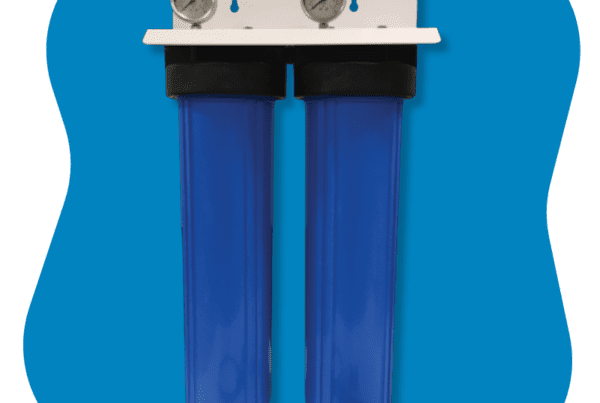How Does Chlorine Effect Your Water Softener?
Water treatment is a process that improves water quality for a specific purpose. The purpose of water treatment varies depending on the source but generally includes making the water safe to drink or bathe in. There are many different water treatment methods, depending on the quality of the water. Common water treatment methods include filtration, chlorination, ultraviolet disinfection, and ion exchange (water softening).
Water softeners are an important appliance in many homes. They remove minerals from hard water, making it easier for household tasks such as laundry and dishes. Softened water also protects plumbing fixtures and appliances from hard water damage.
Hard water has a high concentration of minerals, specifically calcium and magnesium. These minerals can come from various sources, including bedrock, soil, and even runoff from agricultural fields. While hard water is not necessarily harmful to humans, it can be a nuisance, and it can cause scaling on pipes and fixtures, making laundry and dishes difficult to clean. In addition, hard water can make it difficult for soap to lather.

Many people understand what a water softener is, but they don’t think about how to maintain it. Proper water softener maintenance starts with knowing whether the source water is from a private water well or a municipal supply. It is most likely treated with chlorine to remove bacteria and other contaminants if it is from the city. This post will explore the impacts chlorine can have on your health and the life of your water softener.
Chlorine must be removed to get the best possible life from your water softener.
Do I Have Chlorine in My Water?
United States water supplies are treated with a small amount of chlorine to kill bacteria and ensure the water’s drinkability. Chlorine is one of the most common disinfectants used to treat drinking water. Water is easily contaminated, and chlorine has excellent disinfectant properties, and it binds to and destroys bacteria and germs better than most other agents.
However, chlorine can also have some negative effects on the body.
Chlorine is a strong oxidant and can irritate the skin and eyes, and it can also dry out the hair and strip its natural oils. Inhaling chlorine can irritate the lungs and cause difficulty breathing. Some people may be more sensitive to the effects of chlorine than others.
Chlorine can also react with other chemicals in the water to form harmful byproducts, such as trihalomethanes (THMs). THMs are a group of four chemicals that have been linked to cancer. They can also cause other health problems, such as reproductive and developmental issues, liver and kidney damage, and central nervous system problems.
The chlorine levels in drinking water are regulated by the Environmental Protection Agency (EPA) and are considered safe for most people. However, people with sensitivities to chlorine may want to avoid drinking water that contains high levels of chlorine or using water that has been treated with chlorine.
When water is treated with chlorine, a small amount of chlorine is added to the water. This chlorine then reacts with the water to form chloramines. In simple terms, chloramine is chlorine PLUS ammonia. Chloramines are effective at killing bacteria and other microorganisms in the water. However, chloramines can also cause some harmful side effects. Some people may experience skin irritation, nausea, and vomiting when drinking water containing chloramines.
How Can Chlorine Impact My Water Softener?
 Water softeners use ion exchange, which is a process of removing hardness minerals from water. The hard water enters a chamber with thousands of small resin beads with a slightly ionic charge. As the hard water passes through these beads, the magnesium and calcium ions trade places with the charged ions in resin. The water then filters out soft water and sends it to your household plumbing, leaving behind hard ions.
Water softeners use ion exchange, which is a process of removing hardness minerals from water. The hard water enters a chamber with thousands of small resin beads with a slightly ionic charge. As the hard water passes through these beads, the magnesium and calcium ions trade places with the charged ions in resin. The water then filters out soft water and sends it to your household plumbing, leaving behind hard ions.
This process is used in water softeners to remove hardness minerals from water. Hardness is caused by the presence of minerals such as calcium and magnesium. Ion exchange removes these minerals from water by exchanging them with other ions. The most common ions used in ion exchange are sodium and chloride. These ions are exchanged with the calcium and magnesium ions in water. This process effectively removes hardness from water. Over time, the softener resin beads will lose their ionic charge and be covered in hard magnesium and calcium ions. After about ten years, the resin beads will no longer work effectively and require a replacement. A softener fed with water that still has chlorine will have a much shorter lifespan. When water with a chlorine level of above 1.0 ppm passes through a water softener, the chlorine will oxidize the resin beads. This oxidation can affect the softening process and cut the life of your resin in half.
How Can I Remove Chlorine from My Water?
Since 86% of U.S. households receive water from a public water supplier—chances are you have chlorine and chloramines in your tap water. Chlorine and chloramine are disinfectants used to treat water-borne microorganisms like bacteria and viruses. Because most municipalities treat their raw water with chlorine and chloramines before sending it to their customers, almost everyone on city water needs equipment to remove chlorine and chloramines. One simple way to remove chlorine from your water is to let it sit for a while. Fill a pitcher with water and let it sit for at least an hour before drinking. The chlorine will evaporate over time, leaving you with chlorine-free water.
If you need to remove chlorine from your water more quickly, you can boil it. Boiling water for at least one minute will kill any bacteria or viruses present, and it will also evaporate the chlorine.
The easiest way to remove chlorine from your water is to filter it before getting to the water softener beads.
Water softener beads are important for keeping your water soft and free of hard minerals. By exchanging ions with the beads, water softener beads help to remove hard minerals from your water. If these beads are not acting to their fullest potential, your water will not be soft. The chemistry behind the water softening process limits what you can do to prevent the oxidation caused by chlorine. If the chlorine has oxidized your resin bed, it will affect your water softener’s flow rate and capacity. You can restore your softener’s efficiency by replacing the oxidized resin bed with a new one.
While your water softener will not remove chlorine on its own, if you install a chlorine removal filter before your water softener, it can preemptively dechlorinate the water. A dechlorinator is ideal for homeowners with municipal water treated with chlorine and chloramines. Because chloramines do not disperse from the water as chlorine does, our dechlorinator uses catalytic carbon to remove both chlorine and chloramines. The raw water comes in from the municipal source, and the catalytic carbon filter removes the chlorine and chloramines. This dechlorinated water then goes to your water softener for ion exchange. This way, the softener resin does not have to deal with chlorinated water because chlorine decreases the life of softener beads. Depending on incoming water characteristics, the catalytic carbon media will last 5-7 years.
Our Water Experts Can Restore Your Water Softener to Full Capacity
If your water softener isn’t working properly or your water has a high chlorine level, your softener resin bed may need a replacement. Our licensed WQA technicians can analyze your water, determine the health of your resin bed, and even help with a replacement. We also offer a variety of home filtration solutions to help remove excess chlorine from your system. If you are on city water and are worried about the negative effects of chlorine in your water, contact C and J Water today!




